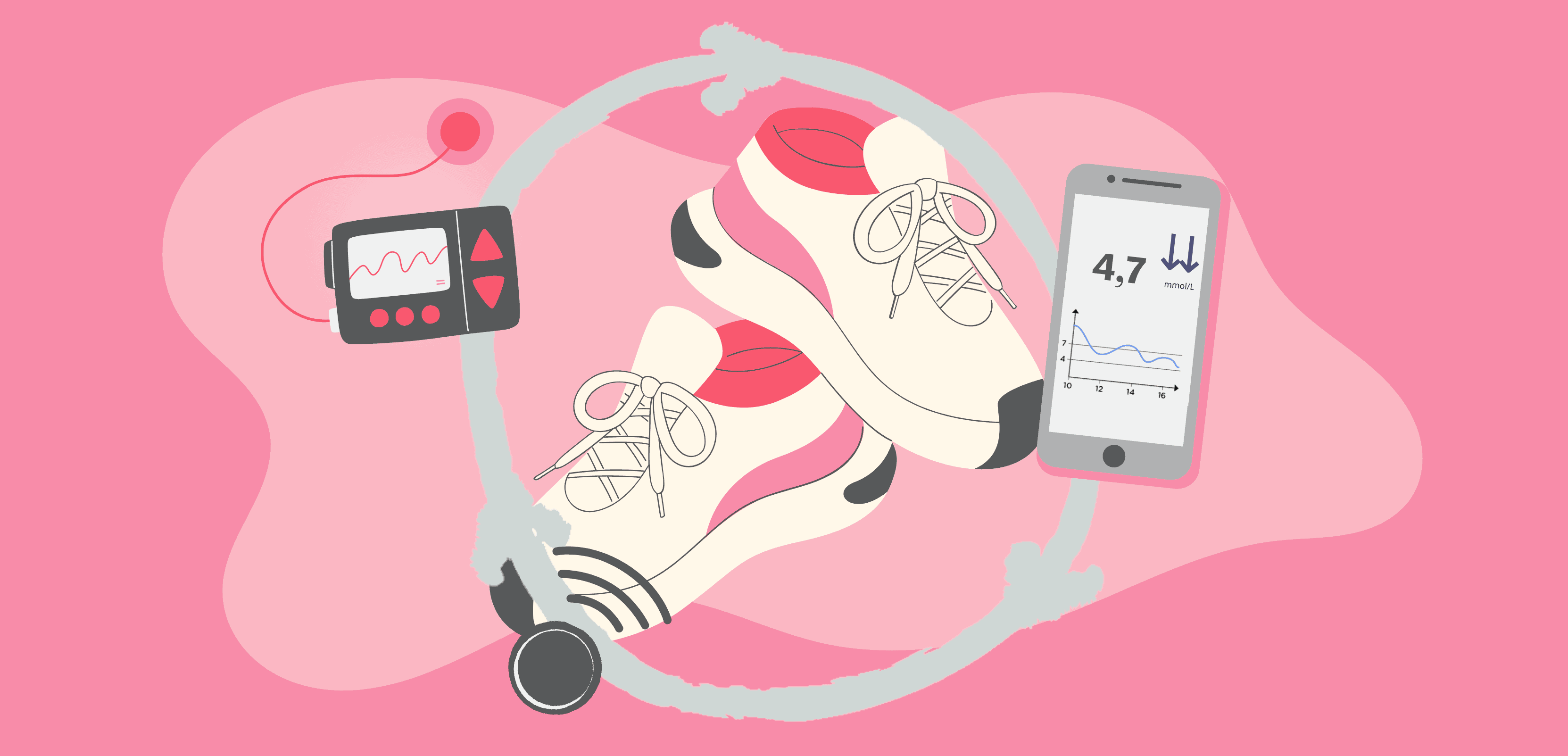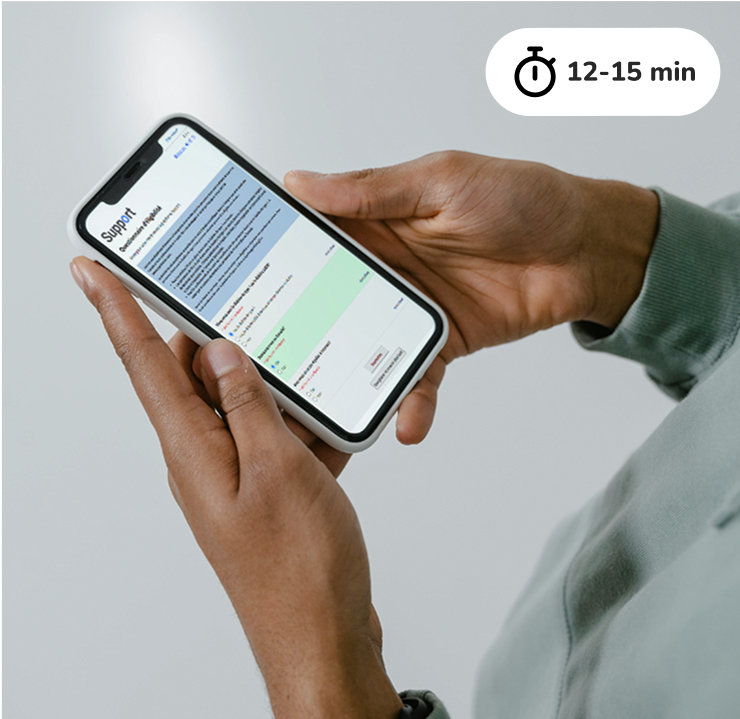It has been well established that physical activity has significant health benefits (e.g., better sleep and well-being) and even more for individuals living with type 1 diabetes (T1D) (e.g., improved insulin sensitivity and possible reduced risk of long term complications). However, whether it be household chores, working out at the gym, or having a physically demanding job, managing blood sugar changes (e.g., preventing hypoglycemia and hyperglycemia) around physical activity and exercise with T1D can feel like solving a challenging puzzle with many moving pieces (pun intended)!
Thankfully, new technologies, such as
Automated Insulin Delivery (AID) systems
can help in managing unpredictable changes in blood sugar levels. But, because AID systems work differently for each person, there are no one-size-fits-all recommendations. Instead, personalized and targeted adjustments are needed to manage blood sugar levels around exercise.
What is AID?
An AID system, also called an artificial pancreas or hybrid closed-loop system, helps manage blood sugar levels for people with T1D. It works by wearing a continuous glucose monitoring (CGM) system to track glucose levels and use a smart algorithm to decide how much insulin is needed and an insulin pump to deliver the right amount automatically.
While AID systems are generally found to improve time-in-range and reduce hypoglycemia thanks to their automation, these devices still rely on user interventions especially around meals and exercise. Also, not all AID devices work in the same way. These systems rely on different algorithms, user interfaces, and the type of adjustments that can be made. Thus, the system recommended for one person might not work well for another one.
Several guidelines have been published about the use of AID systems to manage T1D, however guidance on specific alterations around exercise remains limited (e.g., adjusting insulin dosing or carbohydrate intake to prevent hypoglycemia).
New international recommendations: device specific!
This year, the European Association for the Study of Diabetes (EASD) and the International Society for Pediatric and Adolescent Diabetes (ISPAD) published a position statement on the use of AID systems around physical activity and exercise with T1D. The authors provide practical advice for managing blood sugar levels around exercise in children, adolescents and adults with T1D using different AID systems, with specific adjustments described for each commercially-available device. Members of the BETTER team are among the authors of these guidelines.
Below we break down some of the recommendations for managing blood sugars when exercising with T1D.
Before Physical Activity
For Planned Exercises that usually Lower BG (e.g. running, biking, skating)
- Set Higher Blood Sugar Targets
If you expect your blood sugar levels to drop or stay stable during exercise, set a higher blood sugar target 1-2 hours before starting (turn on the Activity feature / Exercise mode/ Ease-off /or Temporary target depending on your device).
- Reduce Mealtime Insulin
If you plan to exercise within 2 hours after a meal and expect your blood sugar levels to drop, consider reducing mealtime insulin dose by 25-33% in addition to setting a higher blood sugar target.
For Planned Exercises that usually Increase BG (e.g. CrossFit, weight lifting)
- Don’t adjust Blood Sugar Targets
If you think your blood sugar will rise during exercise, consider keeping your regular blood sugar target (may not need to set a higher glucose target).
- Don’t adjust Mealtime Insulin
If you plan to exercise within 2 hours after a meal and expect your blood sugar to rise, take your regular mealtime insulin dose.
For Unplanned Exercises:
- If you expect your blood sugar to drop or stay stable:
- Immediately, at the start of the activity, set a higher blood sugar target.
- Eat 10-20 grams of fast-acting carbs if your blood sugar is below 7.0 mmol/L when you start the activity.
- If you expect your blood sugar to rise, maintain your regular glucose target.
During Physical Activity
Monitor and eat fast-acting carbs:
- Keep a close eye on your CGM readings and trends.
- Remember that physical activity is a situation in which CGMs tend to overestimate actual blood glucose levels
- If your blood sugar drops below 7.0 mmol/L, eat a small amount (3-20 grams) of fast-acting carbohydrates based on CGM trend arrows without telling the pump:
- 3–6 g for a horizontal arrow
- 6–9 g for a slightly decreasing arrow
- 9–12 g for a decreasing arrow
- 12–20 g for two or three decreasing arrows
- Examples equivalent to 3 g: 1 oz (30ml juice), 1 Dex4 tablet, 1 small sugar cube
- Be careful not to eat too many carbs at once, as this can drive the blood sugar to spike and in some cases, may trigger an insulin correction from the AID system and increase the risk of hypoglycemia.
General Tips to Manage Blood Sugar Levels and Exercise
- Try to plan exercise when you have less insulin on board, like before meals or when fasting.
- Low-intensity activity [like walking] can help bring down high blood sugar after meals.
- Avoid exercising if your blood sugar is above 15.0 mmol/L and you have blood ketones above 1.5mmol/L, as it might increase risk of ketoacidosis.
These general guidelines offer great recommendations to start, however since every algorithm is different, no single strategy will fit all and it’s important to be familiar with how one’s own personal device works.
To go further
To learn more about different AIDs and how to adjust those systems for physical activity, visit our self-training platform Support (section on Hybrid Closed Loop Systems Basics – artificial pancreases). If you’re 18 and older, and living with T1D, you can create a free account.
Reference:
- Moser et al., The Use of Automated Insulin Delivery around Physical Activity and Exercise in Type 1 Diabetes: A Position Statement of the European Association for the Study of Diabetes (EASD) and the International Society for Pediatric and Adolescent Diabetes (ISPAD). Horm Res Paediatr 2024; https://doi.org/10.1159/000542287

Written by: Meryem K. Talbo, R.D., M.Sc., Ph.D
Reviewed by:
-
Nathalie Kinnard, scientific writer and research assistant
-
Catherine Leroux, R.D., MSc.
-
Amelie Roy-Fleming, R.D., MSc.
-
Dessi Zaharieva, PhD, Certified Exercise Physiologist, Certified Diabetes Care and Education Specialist
-
Rémi Rabasa-Lhoret, MD, PhD
-
Barbara Kelly, patients partners
Linguistic revision by: Barbara Kelly




